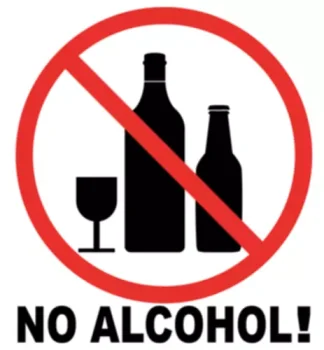
Alcohol is the most commonly used substance in the United States, with 84% of people 18 and older reporting lifetime use, according to data from the 2022 National Survey on Drug Use and Health. Alcohol use exists along a spectrum from low risk to alcohol use disorder (AUD). The intervening category, known as risky drinking, includes heavy drinking as well as binge drinking.[1] AUD is a chronic disease with significant medical, social, and psychological implications for the patient.

Alcohol Use Disorder FAQs
Others may want one-on-one therapy for a longer time to deal with issues like anxiety or depression. Alcohol use can have a big effect on the people close to you, so couples or family therapy can help, too. Are you trying to drink less or stop drinking completely? You doctor also can refer you to a treatment center or experts who can help. Alcoholism is a common and different term for alcohol use disorder. Milder cases — when people abuse alcohol but aren’t dependent on it — are as well.
For fact sheets in multiple languages including alcohol use disorder

Instead, experts follow the criteria for alcohol use disorder that are listed in the Diagnostic and Statistical Manual of Mental Disorders, Fifth Edition (DSM-V). It’s a list of questions about your drinking habits, and how alcohol use affects your daily life and relationships. Your answers can help a doctor understand if you have AUD, and whether it’s mild, moderate, or severe. The NIAAA Core Resource on Alcohol can help you each step of the way. In fact, the consumption of alcohol by pregnant women is the leading cause of preventable birth defects in the U.S., and it can cause a particular constellation of problems called fetal alcohol syndrome.
Alcohol Use Disorder Causes
- Yet guidance related to stimulant overdose prevention and treatment (e.g., SAMHSA, 2020b) is limited compared with the vast research and guidance related to opioid overdose.
- Treatment for AUD can differ from person to person but sometimes starts with detoxification (detox).
- Data have also shown widening disparities in overdose deaths by race and ethnicity.
- As harmful and debilitating as AUD can be for both the person with the disease and their loved ones, there are many approaches that you can take to manage the condition.
But alcohol misuse, also known as excessive drinking, has a more immediate impact, whereas the symptoms of AUD will be more prolonged. However, since alcohol affects people in different ways, recognizing AUD in yourself or in others can be subjective and challenging. Read on to learn more about the symptoms, risk factors, treatments, diagnosis, and where to get support. distinguish between alcohol abuse and alcoholism Drinking alcohol too much or too often, or being unable to control alcohol consumption, can be a sign of alcohol misuse and, in some cases, alcohol use disorder (AUD). You can visit the NIAAA Rethinking Drinking website to learn more about alcohol use disorder, including what a “standard” drink actually looks like and how much drinking may be costing you in dollars.
Medications, behavioral therapies, and social support groups are among the strategies to combat this disorder. As harmful and debilitating as AUD can be for both the person with the disease and their loved ones, there are many approaches that you can take to manage the condition. Everyone’s road to recovery differs; treatments can occur in an inpatient or outpatient medical settings, individual or group sessions with therapists, or other specialty programs.

- If your pattern of drinking results in repeated significant distress and problems functioning in your daily life, you likely have alcohol use disorder.
- But spiritual themes and references to “God” may come up at meetings.
- Other ways to get help include talking with a mental health professional or seeking help from a support group such as Alcoholics Anonymous or a similar type of self-help group.
- If you try AA and it doesn’t feel like the right fit for you, there are other support groups you can try.
- There are effective ways to treat this disease and steps you can take to help a loved one enter recovery.
- One size does not fit all and a treatment approach that may work for one person may not work for another.
- The NIAAA Alcohol Treatment Navigator is another useful tool you can use to find treatment options in your community.
Severity is based on the number of criteria a person meets based on their symptoms—mild (2–3 criteria), moderate (4–5 criteria), or severe (6 or more criteria). Using alcohol during adolescence (from preteens to mid-20s) may affect brain development, making it more likely that they will be diagnosed with AUD later in life. However, most people with AUD—no matter their age or the severity of their alcohol problems—can benefit from treatment with behavioral health therapies, medications, or both. People with SUDs are at higher risk of adverse consequences of drug and alcohol use, such as health, social, and employment problems, incarceration, and death, and have the greatest need for services and treatment. Fortunately, SUDs are preventable and treatable with culturally and linguistically effective prevention, treatment, medication, harm reduction, and social services and supports.

- Not everyone gets the same access to screenings for alcohol use.
- Other medications, such as acamprosate, can help reduce your craving to drink once you’re sober.
- Many people with alcohol use disorder hesitate to get treatment because they don’t recognize that they have a problem.
- Alcohol use can have a big effect on the people close to you, so couples or family therapy can help, too.
- If AUD is not treated, it can increase your risk for serious health problems.